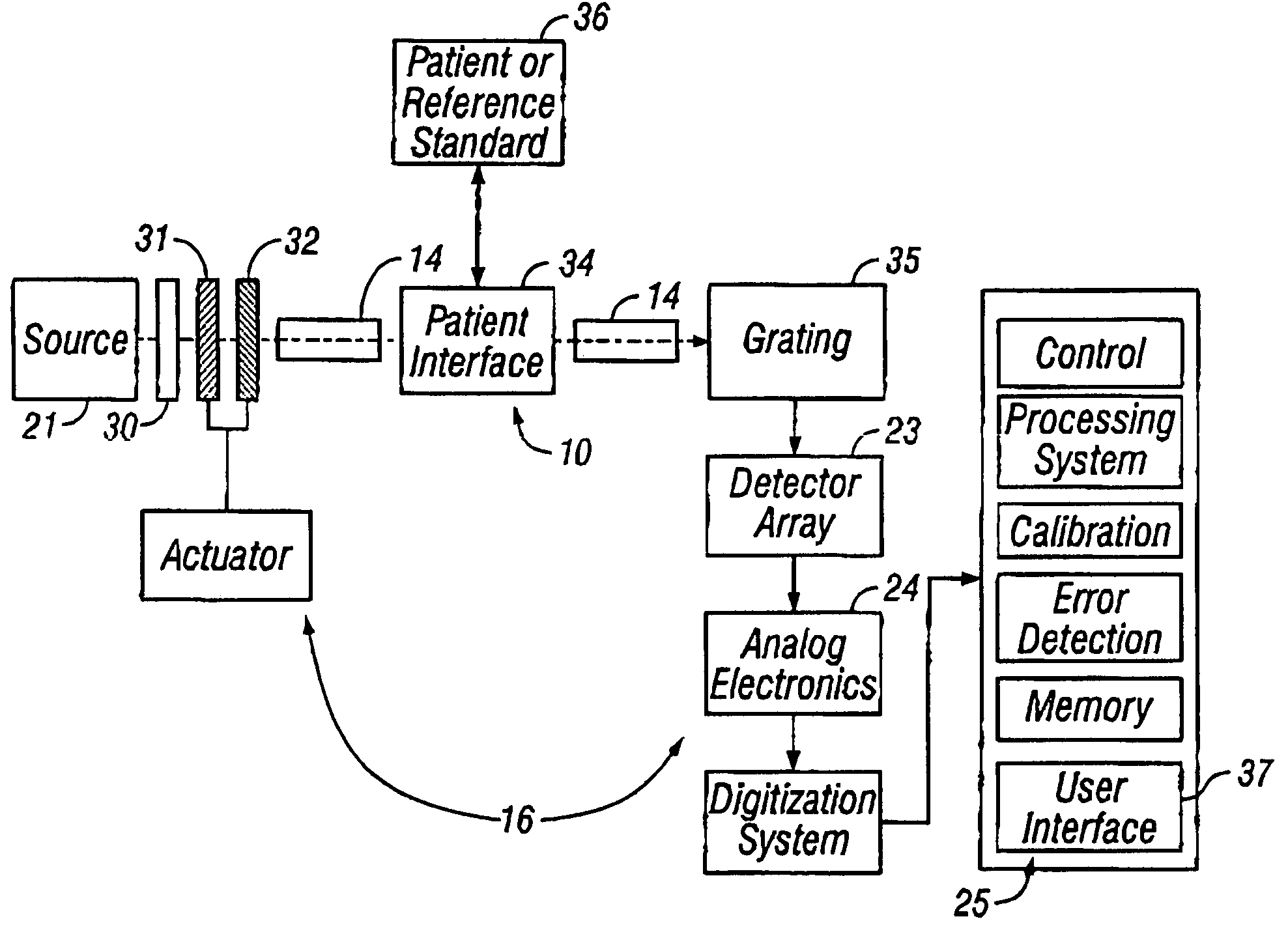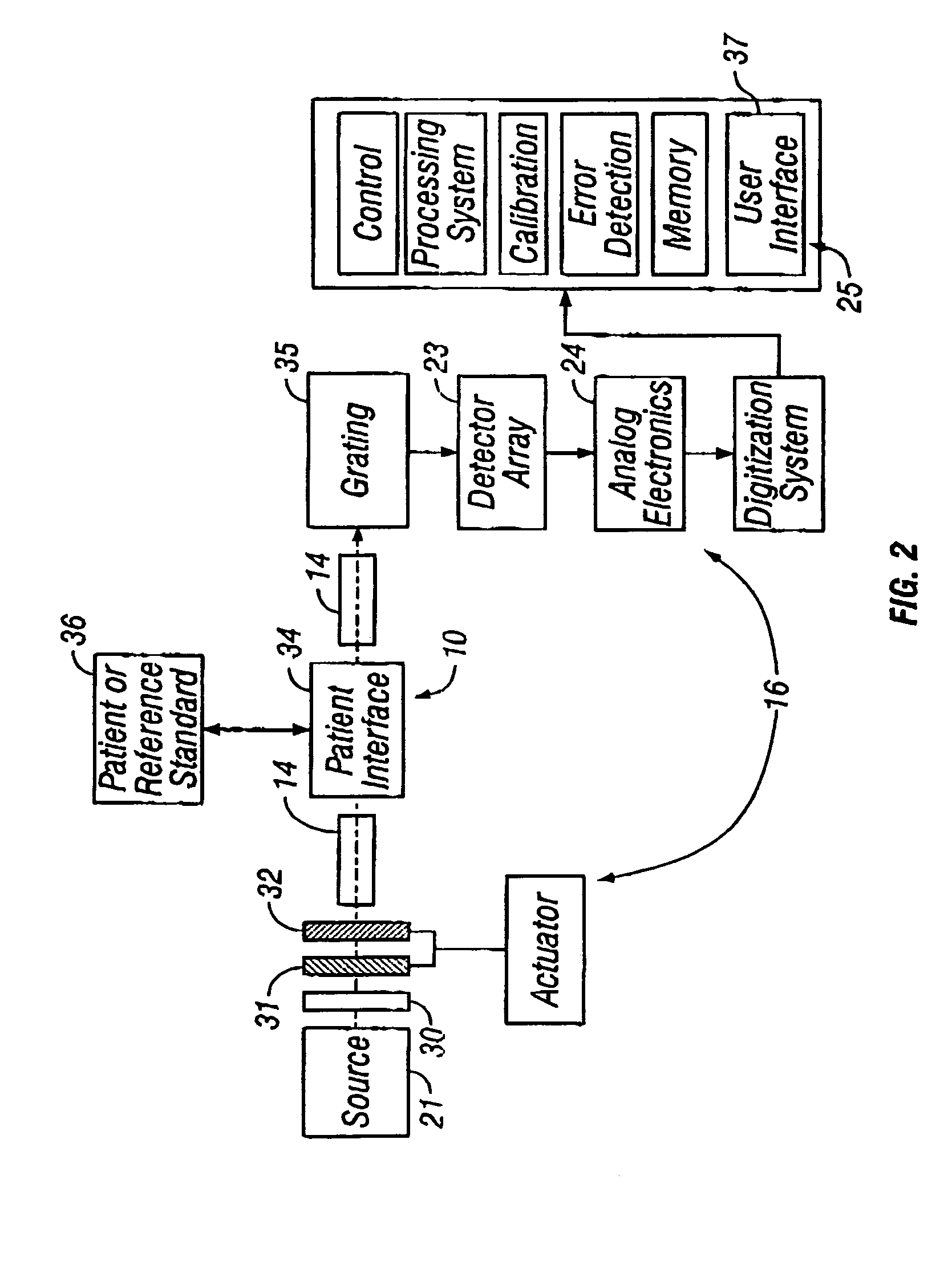Compact apparatus for noninvasive measurement of glucose through near-infrared spectroscopy
a near-infrared spectroscopy and compact technology, applied in the field of fiber optics for the illumination of analyte samples, can solve the problems of poor selectivity, prior art devices have not been able to compensate for variations in skin thickness at the tissue measurement site, and prior art devices have not provided satisfactory compensation, so as to minimize the interference of the adipose layer and minimize the sampling of the adipose subcutaneous layer , the effect of maximizing ligh
- Summary
- Abstract
- Description
- Claims
- Application Information
AI Technical Summary
Benefits of technology
Problems solved by technology
Method used
Image
Examples
embodiments
[0109]A number of instrument configurations of the alternative embodiment are presented below. Those skilled in the art will recognize that permutations and combinations of these embodiments are possible.
[0110]In the simplest embodiment, the LED's may illuminate the sample directly, as in FIG. 13. In FIG. 13, a coupling fluid 134, as disclosed above, is shown between the device and the tissue sample. An optional mixing chamber with a reflective surface may be used between the LED's 130 and the optical window 131 to provide a nearly uniform distribution onto the tissue region 132 surrounding the detection fiber 133. A spacer 135 may also be provided between the fiber and the LED's. In this embodiment, the LED's are designed with a bandwidth enabling the measurement, and the LED's are arranged in a manner that allows the sampling and detection of a particular tissue volume at a particular band of wavelengths. Each LED may be recessed into a material 141 having a reflective surface 140...
PUM
| Property | Measurement | Unit |
|---|---|---|
| wavelength range | aaaaa | aaaaa |
| radial distance | aaaaa | aaaaa |
| radial distance | aaaaa | aaaaa |
Abstract
Description
Claims
Application Information
 Login to View More
Login to View More - R&D
- Intellectual Property
- Life Sciences
- Materials
- Tech Scout
- Unparalleled Data Quality
- Higher Quality Content
- 60% Fewer Hallucinations
Browse by: Latest US Patents, China's latest patents, Technical Efficacy Thesaurus, Application Domain, Technology Topic, Popular Technical Reports.
© 2025 PatSnap. All rights reserved.Legal|Privacy policy|Modern Slavery Act Transparency Statement|Sitemap|About US| Contact US: help@patsnap.com



